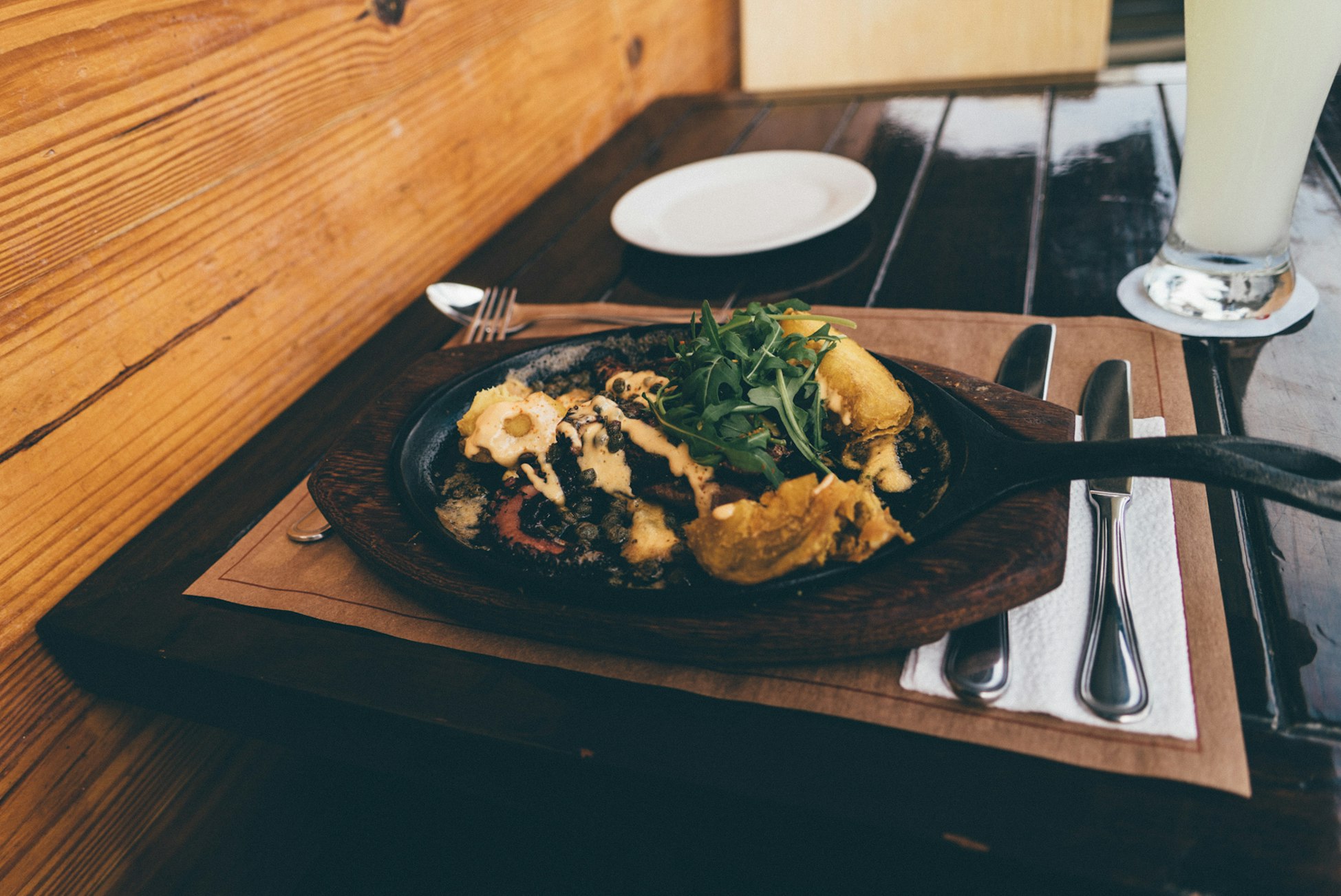The Capitone

Where I grew up, the Christmas atmosphere brought with it so many things, the thousand colored lights hanging on the houses, the annoying noise of the barrels fired by adults and children, the numerous stalls of sweets and toys at every corner, the appearance of enormous blue tubs filled with water in front of any shop selling food with live Capitoni inside.
We kids were intrigued by this strange fish and perhaps spent more time observing the tubs of the capitons than the showcases with toys for Epiphany.
The capitone, together with the cod, the struffoli and the reinforcement salad, represent the backbone of the Christmas Eve menu in the shadow of Vesuvius.
On Christmas Eve, it should be eaten strictly fried.
Christmas culinary traditions are automatically associated with religious holidays. We know at least one tradition that escapes this rule.
The presence of the capitone on the tables, on the evening of the eve, is due to several reasons.
The first is of a purely superstitious nature, the consumption of capitone on the evening of the eve and preparatory to good luck, the second reason is given by the similarity with the snake.
In many cultures the snake is linked to knowledge and wickedness. Eating it would increase knowledge by osmosis and decrease wickedness, again by osmosis.

As for the religious belief, the consumption of the capitone is due to its resemblance to the snake. Since this animal is often associated with the evil one, it is thought that eating it on Christmas Eve helps good to overcome evil and make the world less evil in view of the Savior’s advent.
Consumption linked to religious belief brings with it another tradition, the capitone must be killed and cooked exclusively by women. In memory of the fact that it was Eve who performed the mother of all disobedience.
The arrival of the capitone on our tables is also partly due to Frederick II of Swabia, he was fond of it and also offered it to his guests, thus also clearing it on the tables of the Nobles. We find a written trace of it in the menu served at the Emperor’s table in the Colloquium Generale of 8 April 1240.
The capitone is also present in the Neapolitan grimace, the capitone is number 32.
The capitone is compared to luck in a famous Neapolitan saying, which reads more or less like this “A furtun is comm or capitone, quann pienz che se ne fuj” or, Luck is like the capitone, when you think you have it among hands she runs away.

Numerous cinematographic citations have also been dedicated to the capitone, the most famous, sees him protagonist in a memorable scene of Cosi spoke Bellavista, in which the protagonist tries to prepare the capitone for cooking but, in a succession of comic scenes, the fish, the mock and save. A scene that was certainly experienced in several houses.
A curiosity about the capitone, in reality the capitone is the female of the Eel. The difference between male and female is also physical, the male is smaller than the female, which can reach one and a half meters in length and can live up to 50 years. It can survive up to 2 days out of water.
It can live, adapting very well, both in fresh and salt waters.
A second curiosity concerns the reproduction of this species. All eels are born in the Sargasso Sea and their reproductive instinct is so developed that, during the reproduction period, it pushes every adult specimen to return there, those that live in lakes or ponds crawl out like snakes to reach the sea or a river that lead them to the sea.
The consumption of the capitone is not limited to the Christmas holidays.
Besides fried it can also be tasted grilled or stewed.
There are various festivals dedicated to eel or capitone around the country, among the most famous is the one held in Sasso D’Ombrone.
One of the most popular varieties of eel is undoubtedly that of the Comacchio valleys.
